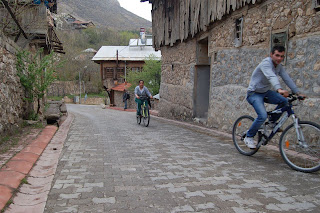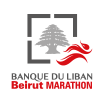 |
| Start of 10k fun run, November 10, 2013 |
Over the course of its 11-year history, the Beirut Marathon, which includes a full 42.2k marathon, a 10k fun run and 5k youth run, has become not only a festive celebration of national unity but also a testament to the vibrancy of civil society movements in Lebanon.
 |
| During the marathon, Beirut's streets are wide enough for all to walk side-by-side |
Starting near St. George Bay and following the Corniche to the Lighthouse, back through Hamra and Downtown, and then to the finish line at Martyrs’ Square, the 2013 10k “carnival run” gives people a chance to display the colors of their favorite cause.
Over 114 NGOs participated in this year's marathon, raising awareness about their efforts to fight diabetes and heart disease, to help those with autism or cancer, to protect the environment, and so on. The broad diversity of groups taking part in the marathon has helped make the Beirut Marathon a strong manifesto for peace. You can see a sampling of peace-making in Beirut in the slide show below.
"Peace-making is not a sprint; it is more of a marathon," says May El Khalil, founder and president of the Beirut Marathon Association (BMA). In "just" 11 years, BMA has established the marathon as a “platform for hope and cooperation in a troubled part of the world,” as May phrased it in her TED talk in Edinburgh earlier this year.
The BMA has also provided assistance to race organizers in a number of countries, including Egypt, Syria and Jordan, and regularly attracts runners from more than 100 countries to help spread the message of peace and well-being through sports.
 |
| Iraqi runners made a strong showing in all events |
If you like to push boundaries, come run the Beirut Marathon in 2014 and let’s show the world all the good that comes from running.
Note: Elite athletes and international runners participating in this year’s Beirut Marathon stayed at Smallville Hotel, a stylish family-run boutique hotel located next to the National Museum, with spacious rooms, an excellent bar, and a small restaurant offering traditional cuisine with flair.
For more reports on the 11th Beirut Marathon:
IAAF Beirut Marathon race report
Daily Star race report







